Key takeaways:
- Understanding team dynamics involves recognizing individual personalities and fostering open communication to enhance collaboration.
- Effective teams thrive on clear communication, setting measurable goals, and embracing inclusivity for innovation.
- Building trust requires vulnerability, celebrating achievements, and following through on commitments to create a reliable environment.
- Continuous improvement is driven by regular feedback, celebrating small wins, and being open to change and new processes.
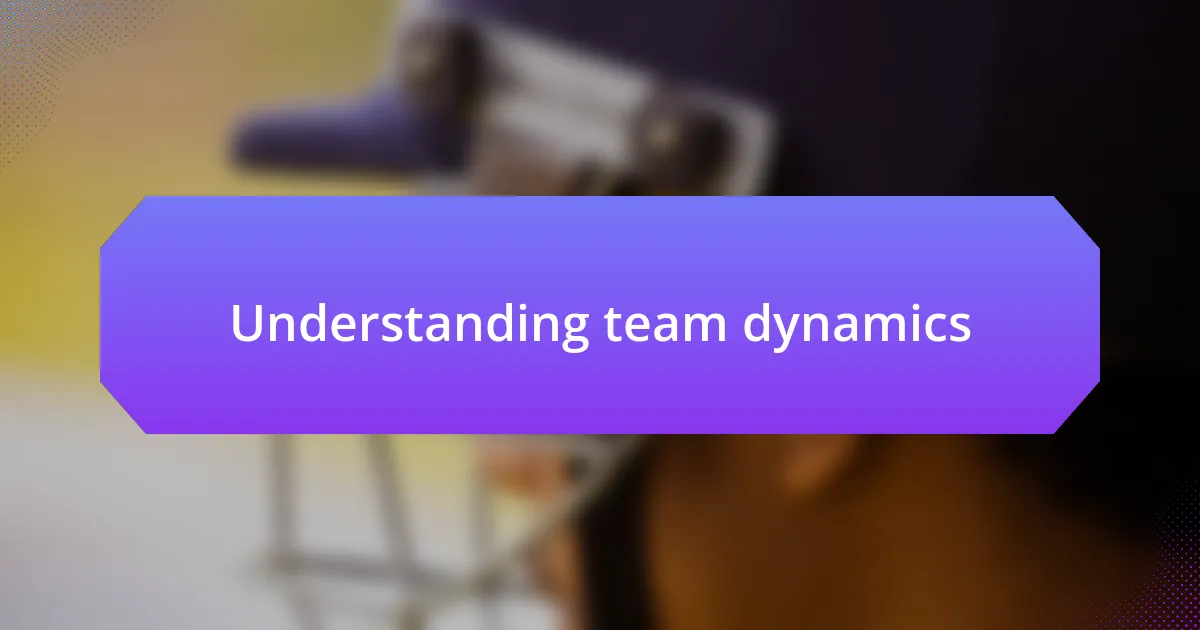
Understanding team dynamics
Understanding team dynamics goes beyond just knowing who is on your team. From my experience, it’s about the intricate relationships formed and how different personalities interact and influence one another. Have you ever noticed how a single person’s attitude can shift the mood of the entire group?
One time in a project, we had a team member who consistently brought high energy and positivity, even when challenges arose. Their enthusiasm was infectious, boosting everyone’s motivation and collaboration. This made me realize that the emotional tone set by individuals is crucial; it can either foster a supportive environment or create tension.
Moreover, recognizing the diverse roles team members play is essential. Not everyone will shine in the same way, and that’s perfectly okay. I’ve seen teams thrive when they celebrate different strengths, allowing introverts to contribute thoughtfully while extroverts lead discussions. So, how do you actively nurture these differences? By fostering open communication and creating a safe space for everyone to express their thoughts.
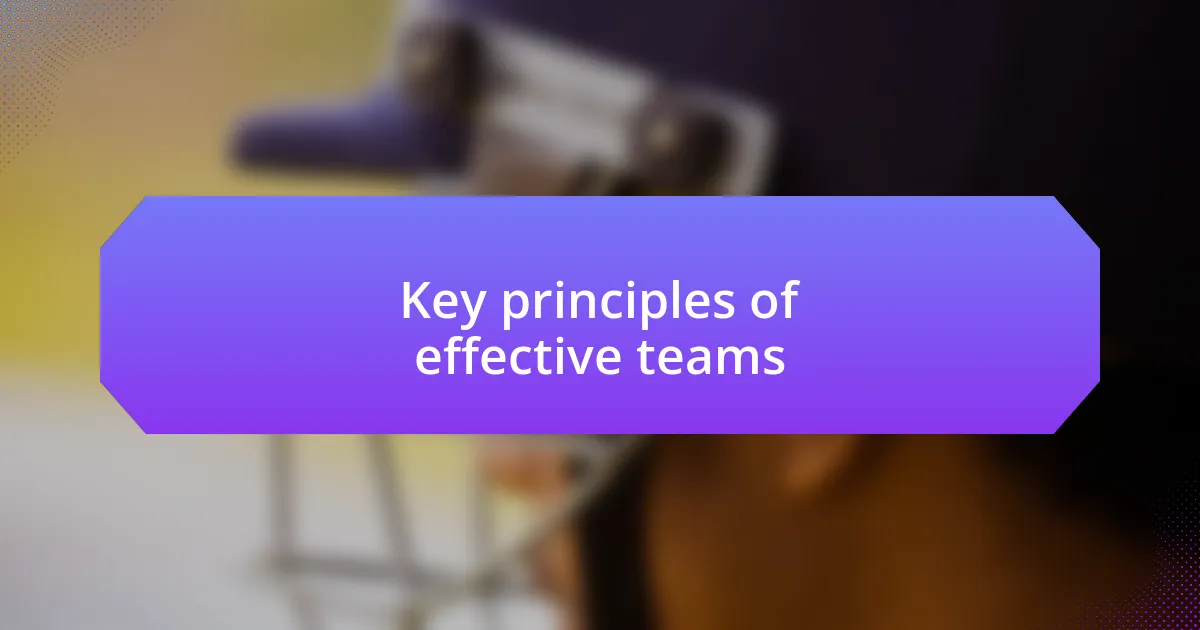
Key principles of effective teams
Effective teams thrive on clear communication. I’ve often found that when team members openly share their thoughts and provide constructive feedback, trust builds naturally. In my experience, even a simple weekly check-in can dramatically improve understanding and alignment on goals. Have you ever been on a team that dodged difficult conversations? It’s not pretty—issues snowball until they’re too big to ignore.
Additionally, setting clear goals is vital for any team. I remember working with a group that came together with vague expectations. The lack of direction led to confusion and frustration. On the flip side, when we established specific, measurable objectives, everyone felt more motivated and engaged. The clarity brought focus and energized the entire team to move forward together, rather than in separate directions.
Lastly, embracing inclusivity not only enriches team dynamics but also drives innovation. I have witnessed transformative ideas emerge when people from different backgrounds and perspectives unite. It’s astounding how a single diverse opinion can challenge the status quo and spark creativity. So, have you considered how your team can benefit from varying viewpoints?
| Key Principle | Description |
|---|---|
| Clear Communication | Open dialogue fosters trust and enhances understanding. |
| Setting Goals | Establishing clear, measurable objectives provides direction and motivation. |
| Inclusivity | Embracing diverse perspectives drives creativity and innovation. |
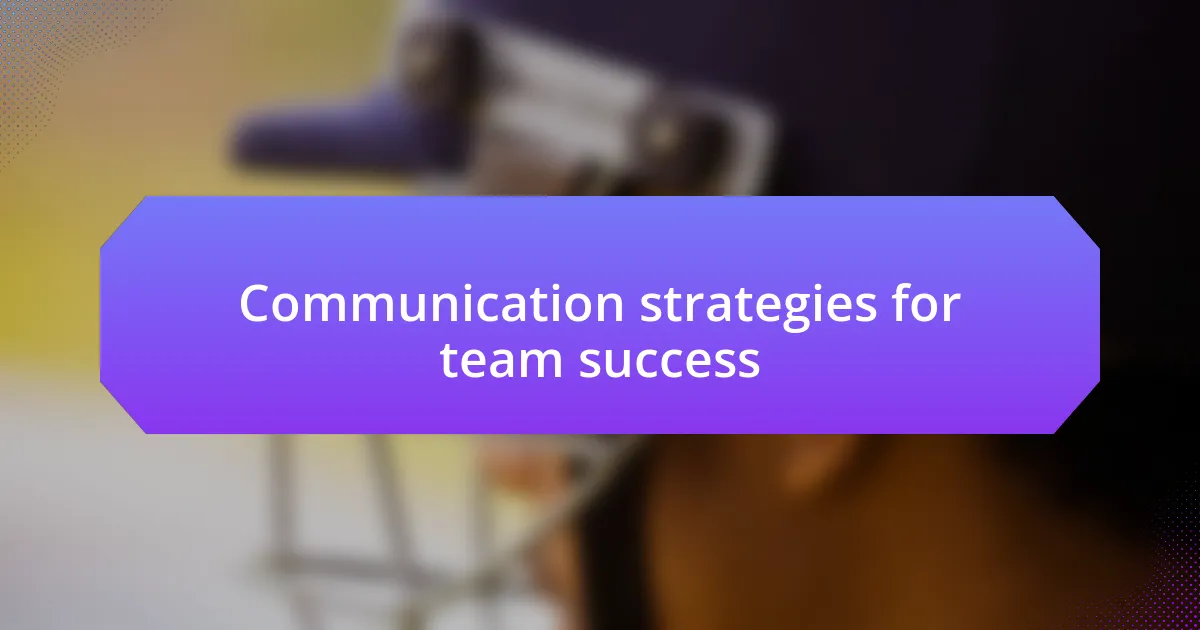
Communication strategies for team success
Effective communication strategies are crucial for any team to reach its potential. From my experience, regular and open conversations can help unearth issues before they grow. I recall a particular project where we implemented daily stand-ups. These brief, focused meetings not only kept everyone informed but also led to immediate resolutions of concerns as they arose. It felt reassuring to integrate feedback daily, creating a rhythm that kept momentum alive.
To enhance communication in your team, consider these strategies:
- Active Listening: Encourage team members to truly listen to one another. It fosters respect and understanding.
- Encourage Transparency: Cultivate an environment where sharing challenges is welcomed. This builds a safety net for problem-solving.
- Leverage Technology: Use collaborative tools that allow for seamless communication, regardless of location.
- Provide Constructive Feedback: Frame feedback positively to encourage growth rather than defensiveness.
- Establish Clear Protocols: Define how and when to communicate. This sets expectations and minimizes confusion.
In my career, I’ve seen how a few small adaptations in communication can transform a team’s dynamic. It genuinely makes a difference when everyone feels heard, valued, and aligned on the mission. Wouldn’t you agree that these elements can elevate your team’s success?
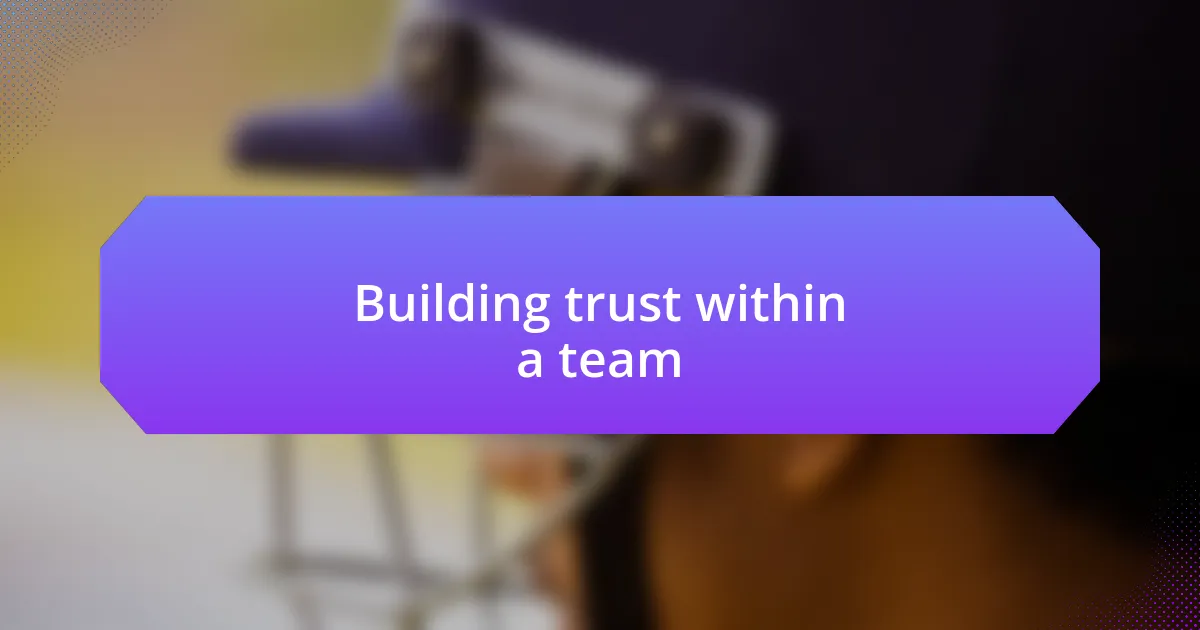
Building trust within a team
Building trust within a team is essential for fostering collaboration and innovation. I remember when I joined a new team where everyone seemed a bit guarded at first. It took some time, but through team-building activities and shared experiences, we gradually broke down barriers. The moment we started sharing not only successes but also our failures, I could feel the trust starting to solidify. Have you ever noticed how vulnerability can create stronger bonds?
It’s also vital to celebrate each other’s strengths and unique contributions. In one project, we recognized individual achievements during our weekly meetings, which significantly boosted morale. Just knowing that our efforts were appreciated made us more willing to take risks and be open with one another. Reflecting on this, I often wonder how simple acknowledgment can cultivate an environment where everyone feels valued and secure.
Consistency in actions builds trust over time. I’ve experienced teams falter when what was promised wasn’t delivered. I’ve learned that following through on commitments creates an atmosphere of reliability. When colleagues see that you take your word seriously, they feel more comfortable sharing their thoughts and concerns. Doesn’t this perspective on consistency shift the way we think about our roles in a team?
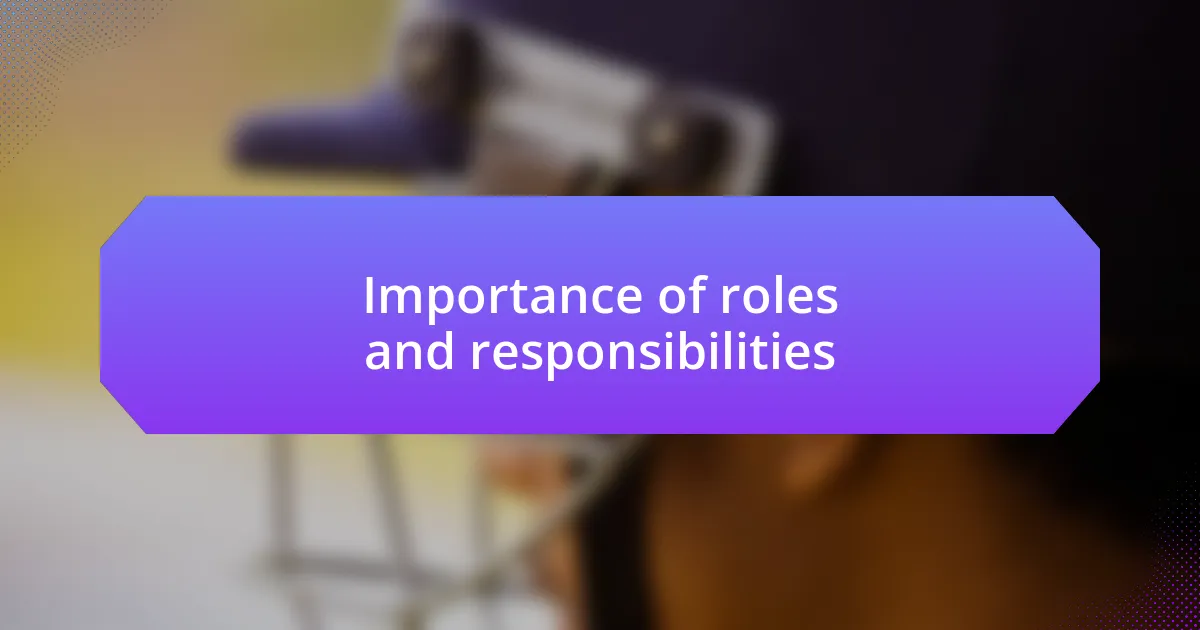
Importance of roles and responsibilities
Having clearly defined roles and responsibilities is the backbone of effective team dynamics. In my experience, when team members understand their specific duties, it minimizes confusion and overlap. I recall a project where our roles were ambiguous; it quickly led to frustration and redundancy. Does that resonate with you? I remember feeling lost, unsure of what was expected, which hindered our progress.
When each person knows their individual contributions, accountability naturally follows. I’ve witnessed teams excel when members embrace their roles and own their responsibilities. This ownership breeds a sense of pride in one’s work and fosters a culture of accountability. For example, in a previous team, we designated a ‘project owner’ for each task, and I still remember the boost in our collective confidence when we recognized our contributions truly mattered.
Moreover, having defined roles fosters collaboration rather than competition. I was part of a team where we established our responsibilities based on each member’s strengths. This way, we didn’t just work alongside each other; we complemented one another’s skills. Have you ever experienced a moment when the synergy of a well-coordinated team felt almost magical? I know I have, and it reinforced for me how important it is to clarify roles for a successful partnership.
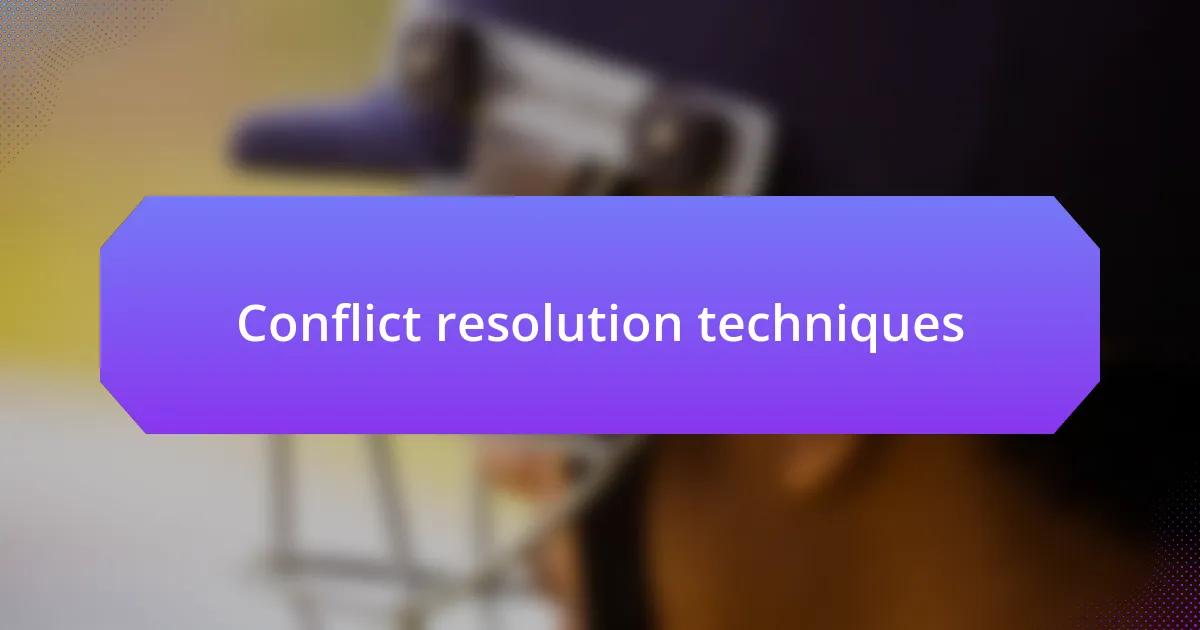
Conflict resolution techniques
When conflict arises in a team, I’ve found that active listening is one of the most effective techniques to employ. In a past project, a disagreement escalated during a team meeting, and I took the initiative to ensure everyone felt heard. By restating their concerns and asking clarifying questions, we created an atmosphere of respect and understanding. Have you noticed how simply being heard can shift the tone of a discussion?
Another approach that has served me well is the ‘win-win’ strategy, where I encourage the parties involved to find a compromise that satisfies everyone. I remember a situation where two colleagues clashed over differing ideas for a presentation. Instead of letting them butt heads, I facilitated a brainstorming session that combined the best elements of both proposals. The resulting presentation was far superior to either individual idea—proof that differences can lead to innovative solutions if handled correctly.
Lastly, I believe in the power of setting ground rules for conflict resolution ahead of time. In one team I worked with, we established a method where, during disputes, we would pause and agree to discuss the issues respectfully and constructively. This proactive approach not only minimized heated exchanges but also fostered a sense of safety. Have you ever tried setting rules for navigating conflict? It can really transform the dynamics of the discussion, making it feel less personal and more productive.
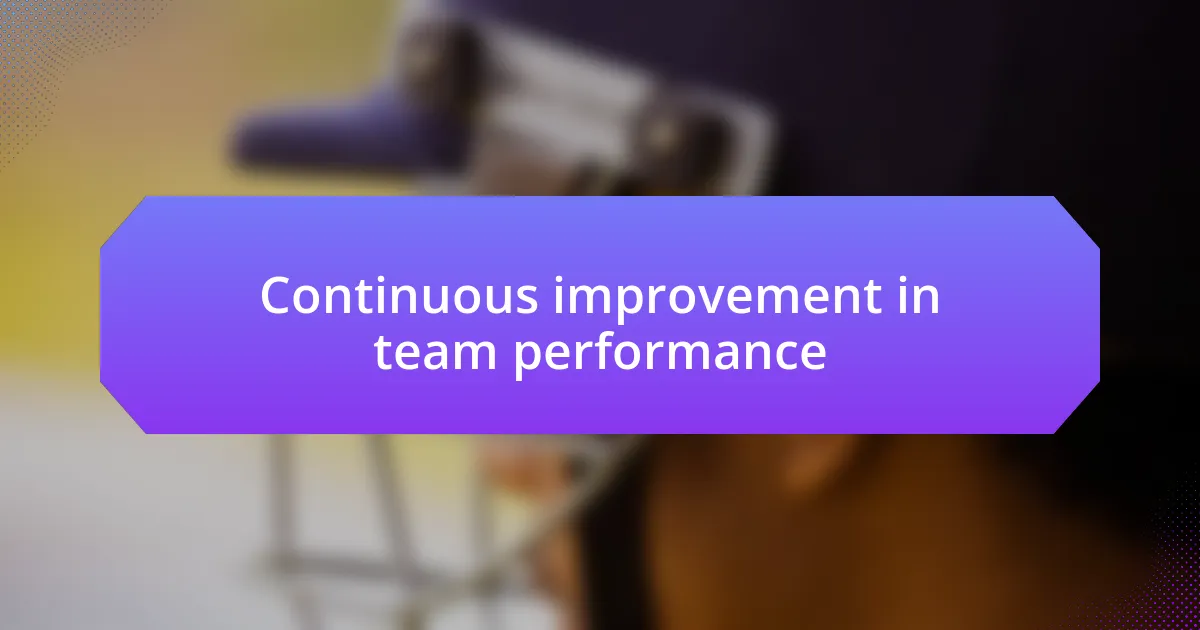
Continuous improvement in team performance
Continuous improvement in team performance is something that requires ongoing attention and effort. I vividly recall a project where we implemented bi-weekly feedback sessions to evaluate our progress. These discussions were transformative; they opened up channels of communication that allowed us to address issues before they snowballed. I often wonder if teams fully realize the power of constructive feedback—does your team actively seek it out?
Another significant aspect I embrace is celebrating small wins along the way. I remember a time when our team hit a project milestone, and we took a moment to acknowledge everyone’s contributions. This simple act boosted morale and motivated us to tackle the next challenge with renewed energy. How often does your team pause to celebrate achievements, no matter how small they seem?
I’ve also found that embracing change is crucial for continuous improvement. In my experience, teams that resist adapting to new methods or tools often find themselves stagnating. During one project, we decided to experiment with a new software tool that initially seemed daunting. However, once we embraced that change, our productivity soared and we discovered efficiencies we never thought possible. Isn’t it interesting how stepping out of our comfort zone can lead to remarkable improvement?














